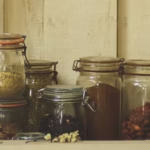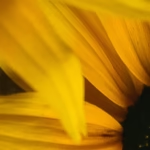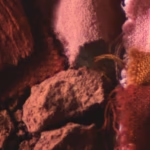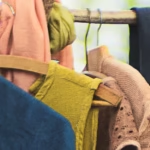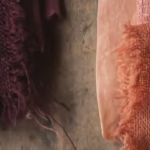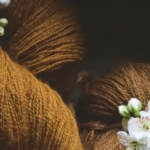A biomordant for plant-based dyeing without alum
In natural dyeing, mordanting is an often decisive stage. Looking for an alternative to alum for chewing wool? Are you interested in ecological, all-plant dyeing? Then beet might be just what you’re looking for.
Some were quick to dismiss it as a dye plant. And with good reason: beet colorants are members of the betaine family, bright and vibrant colorants that disappear in the first wash.
It’s not so much the plant’s colorants that interest me, but its richness in oxalic acid. The oxalic acid content of these leaves is particularly high, as is that of rhubarb and dock.
Oxalic acid acts as a mordant for all animal fibers, wool, and silk. There’s a kind of chemical affinity between oxalic acid and the animal proteins in fiber. In fact, as some studies have shown, this may be one of the reasons why people who eat a diet rich in animal proteins are more prone to kidney stones.
Let’s get back to natural dyeing. My experiments with beet leaves show that they can be used as a natural, bio-mordant for dyeing wool and silk. What more could you ask for than a plant-based mordant made from local plant waste?
The principles of mordanting with beetroot leaves
Which fibers to dye:
Beet leaves only act as a mordant on animal fibers, wool, or silk.
Where to find beet leaves:
If you love beets and grow them in your garden, this is a great opportunity to recycle the tops for color.
Alternatively, don’t hesitate to ask your organic grower at the market for beet tops, which usually end up in compost.
Harvesting:
Beets can be harvested throughout the summer, or even better in late summer. Used fresh, immediately after harvesting, beet tops offer more intense nuances. However, if you can’t make a decoction right away, you can dry them. The results remain interesting.
Part used:
Aerial part: leaves and stems.
Quantity:
Fresh leaves and stems: 200% of the weight of fiber to be dyed.
Dried leaves and stems: 100% of the weight of fiber to be dyed.
The recipe for beet mordant
First step: Making beet leaf extract
- Dry-weigh the fibers to be dyed.
- Weigh the leaf equivalent:
- an equivalent weight for dry leaves, or
- double the weight of fresh leaves.
- Trim beet tops finely with a spinet or pair of scissors. Put them in the stewpot and cover with water, rainwater if possible.
- Heat in a ventilated area. Gradually raise the temperature until it reaches a gentle simmer.
- Stir regularly. Add water if necessary during cooking to keep the plant submerged.
- Keep at a gentle simmer for at least 45 minutes and up to 1H30.
- Cut the heat. Let cool.
- Once warm, filter your juice through cheesecloth in a colander. You can compost the rest of the cooked vegetables.
- Reserve your juice.
You can use it immediately for the mordanting bath. You can also store it for a few days in an airtight container such as a food bottle or jar.
If you have worked with fresh leaves, you will obtain a bright pink juice. This color is due to betalains. These are the colorants:
- found in most plant families belonging to the order Caryophyllales.
- very lively but fragile. Their interest in natural dyeing is therefore very limited.
On the other hand, they are particularly popular as food coloring.
Second step: Mordanting with beet leaf extract
- Pour your beet juice into a pot large enough to spread out the fibers to be dyed.
- Add more water, if possible rainwater, to obtain a ratio of approximately 1/20, i.e. 20 liters for 1 kg of fiber to be dyed.
- Dip your wet, wrung-out fibers in the water. Spread them well in the mordanting bath.
- Heat and gradually raise the temperature to a simmer.
- Stir regularly and gently. During cooking, add hot water if necessary to keep the fibers submerged.
- Leave to simmer for between a quarter and an hour. The greater the quantity of fiber to be dyed, the longer the cooking time.
- Turn off the heat and allow to cool.
- Remove the fibers from the bath and wring them out.
If you’ve completed your dyeing project, you can then follow up with a dye bath using the plant of your choice. Otherwise, let your beet leaf mordanted fibers dry and store them carefully for a later dyeing project.
Fibers cooked in fresh leaf juice will have an attractive pinkish color, while those cooked with dry leaves will be yellowish. Biomordant plants add subtle nuances to plant colors.
All my samples were washed with an ecological soap-free detergent. The nuances haven’t changed.
I’m not a scientist or a chemist, but from experience, I can say that beet leaves, which are considered waste, can be usefully recycled to make color. In particular, it seems to give the phytolacca plant a firm hold, despite its reputation for not being strong. It also works well for madder dyeing.
